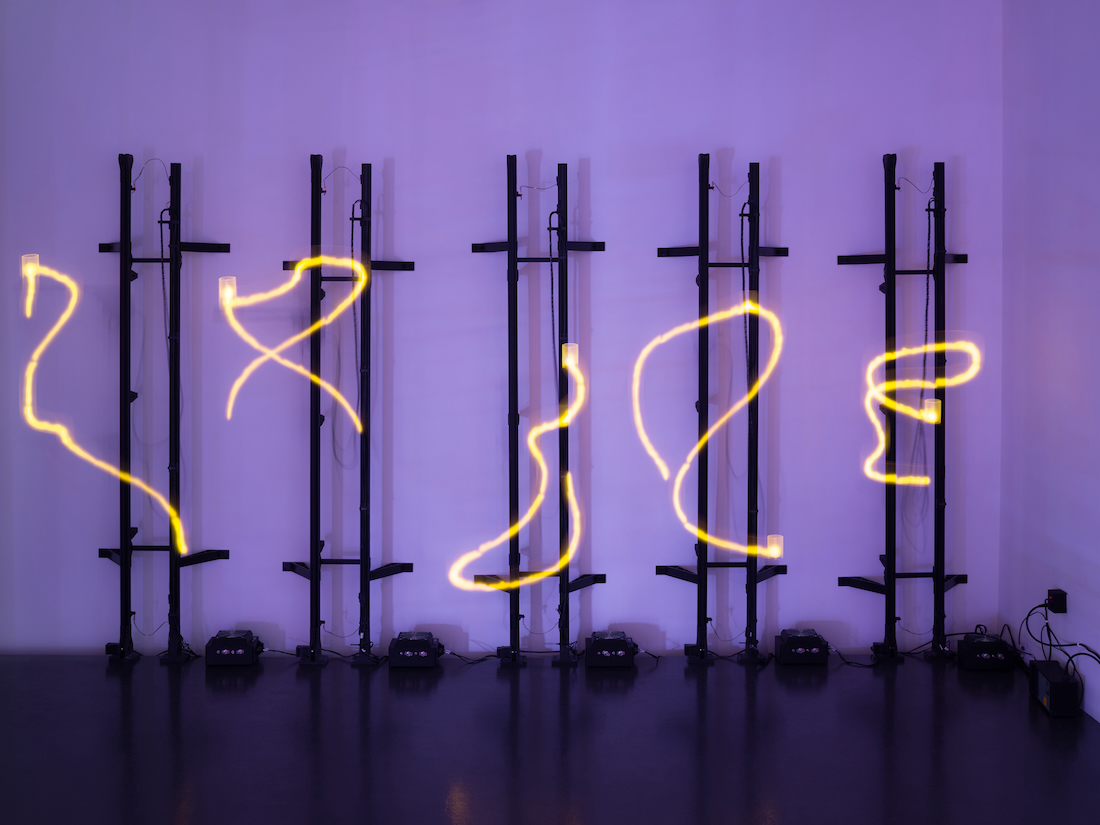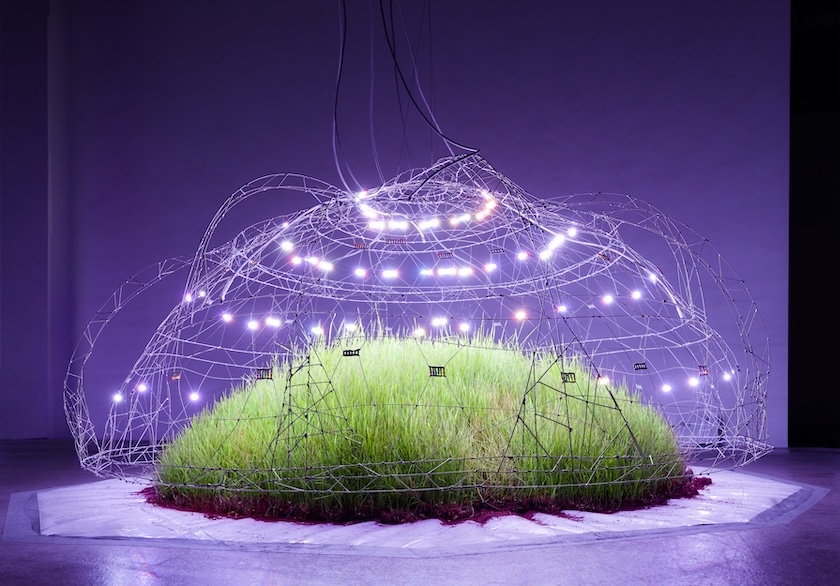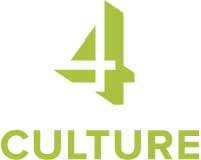Imaginary Future: James Hartunian considers technology and nature in TIMBER!

“What would a firefly look like if it was actually on fire?” James Hartunian wondered.
At the time, he was in Ohio for grad school, living next to a neighbor from rural Idaho. One night in early summer, the neighbor “ran outside in this excited fervor,” Hartunian says, because he’d never seen fireflies before. The little glowing beetles were just “a benign part of reality” in Michigan where Hartunian grew up. He’d never really thought about them before.
Hartunian makes speculative artwork that starts with an everyday part of nature and then alters it somehow—think ice, plants, mushrooms. TIMBER!, the exhibition currently on view at Gallery 4Culture, began with the fireflies—and then by imagining a future in which they no longer exist, where forests no longer exist, and “the machines are trying to recreate life,” he says.
“Taking this idea, this thought experiment, I kind of pull it all the way to its furthest conclusion,” Hartunian says. “I have a starting point and then I’m like, okay, so in this particular world, what else would there be?”
TIMBER! features three installations, one of which is a mechanical firefly simulation. The piece uses a complex combination of motors, electronics, and mechanical camera sliders to randomly move a series of flickering LED lights; the work is held together using custom-designed 3-D printed pieces and some 700 screws.
In the past, Hartunian has adapted existing components to create kinetic work, but TIMBER! marks the first time he’s designed the circuit board and drivers himself. To do so, he relied heavily on online resources from the DIY electronics community, and a lot of trial and error. (After the exhibition opened, he was still troubleshooting a triggering mechanism that kept shorting out.)

Hartunian likes to figure out how to make things work, not just conceptually, but physically. That makes sense, given that he’s a scientist as well as an artist, with a bachelor’s degree in biochemistry and membership in the American Chemical Society. (Once upon a time he worked in polymer sciences, which are related to battery chemistry.) “I’m constantly seeking out information,” he says.
Prior to starting his MFA in 2020, he made wearables that re-imagined sensory experiences. But forced to work without other human bodies during the Covid lockdown, he pivoted to plants—an experiment that led him to grow a 10-foot sunflower indoors using a system of grow lights. It bloomed in the dead of winter.
“I never thought that it was actually going to do it,” he says. “There’s this built-in doubt whenever you do anything with electronics where you’re like, this is never going to work the first time…and then it does!”
For the second installation in TIMBER!, Hartunian again considered his mythical forest: “How would you create a tree falling if there’s no tree? What would that look like as a mechanized diorama?” Now an evergreen tree intermittently falls in one corner of the gallery.

“It’s absurd,” he says. “The idea of a tree falling just continuously is silly and stupid. It would never exist outside of art—science fiction, but also fantasy.” Perhaps unsurprisingly, Hartunian consumes a lot of science fiction books, podcasts, etc. Lately he’s been reading novels from the 1960s, which he says tend to be utopian, rather than dystopian. In those stories, “even when we are able to travel across the galaxy, it’s interhuman squabbles that get us in trouble. And so sometimes I just take out the human and imagine what the world would be like without the human.”
The third installation in Hartunian’s current exhibition is composed of two basket-like domes woven together with soldering iron and wire. With a 5-volt current running through them, the domes power a series of LEDs. Beneath them, grass is growing.
Though the effect is beautiful, “The entire [dome] is designed out of utility, not necessarily aesthetics,” Hartunian says.
In the speculative world of TIMBER! the sun is obscured, so everything has to be grown under artificial light. He started growing the grass a week before the exhibition opened—in his garage where it’s 58 degrees.
Yet nature has insisted on having its way: Mold spores found their way into the soil, perhaps during transport to the gallery. Hartunian grew the grass in coconut husk, rather than the soil he usually uses—the idea being that the coconut husk is more sterile and wouldn’t mold over as quickly. As it turns out, “It’s molding over way faster because there’s nothing in it.”
TIMBER! is on view through Jan. 30.
